In this post: a brief history of Meknes, Morocco; the most underrated Imperial city; the bloodthirsty ruler and Moroccan Versailles; what went wrong; Meknes today; personal impressions.
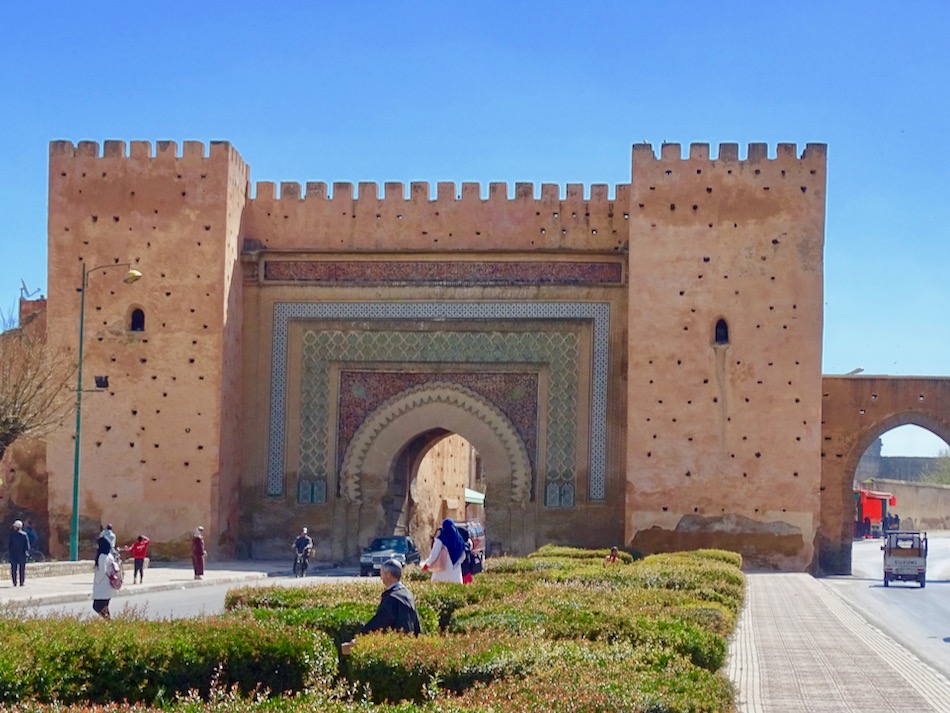
Explore Small Towns of Morocco
Dive into a fascinating story connecting Morocco and America – Azemmour: Come For The Street Art, Stay For The History. Taste the freshest oysters brought from the lagoon sparkling right in front of you.
Meknes landed on Lonely Planet’s list of the best travel destinations to visit in 2019. There are four categories – countries, cities, regions and best value places – highlighting what the renowned travel guidebook publisher has recognized as the top 10 entries in each one. Meknes settled in the tenth position among the top cities.
A few months back we spent a couple weeks in Morocco. Unusually short, this trip was sort of reconnaissance for a future long-term visit. Based in Casablanca, we traveled to some lesser known destinations along the Atlantic Coast and in the northern part of the country. Meknes was one of them.
One of the four imperial cities of Morocco and a UNESCO World Heritage Site, Meknes, curiously, failed to attract the same amount of tourist attention as Fez or Marrakesh.
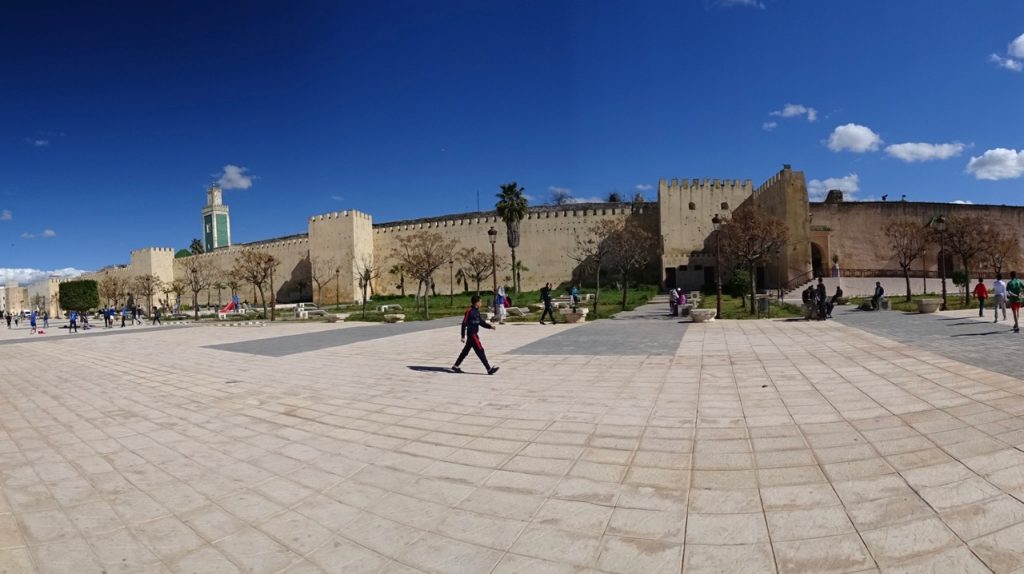
At first, I was surprised why Lonely Planet put a spotlight on Meknes this time. It seemed a rather random choice. However, after quick research, I found their criteria for the Best in 2019. It explained that “…destinations are not a heads-up of where travellers are going, but a means to express where travellers should consider visiting in the coming year… we think it’s up-and-coming and suggest travellers visit before the crowds do.” Aside from wonderfully British spelling, it reminded me that when we came to Meknes, good portions of the historical part of the city were fenced off apparently undergoing some rehabilitation. The famous Mausoleum of Moulay Ismail was in the final stages of a two-year head-to-toe restoration. I guess, in anticipation of its grand re-opening, Meknes made the list.
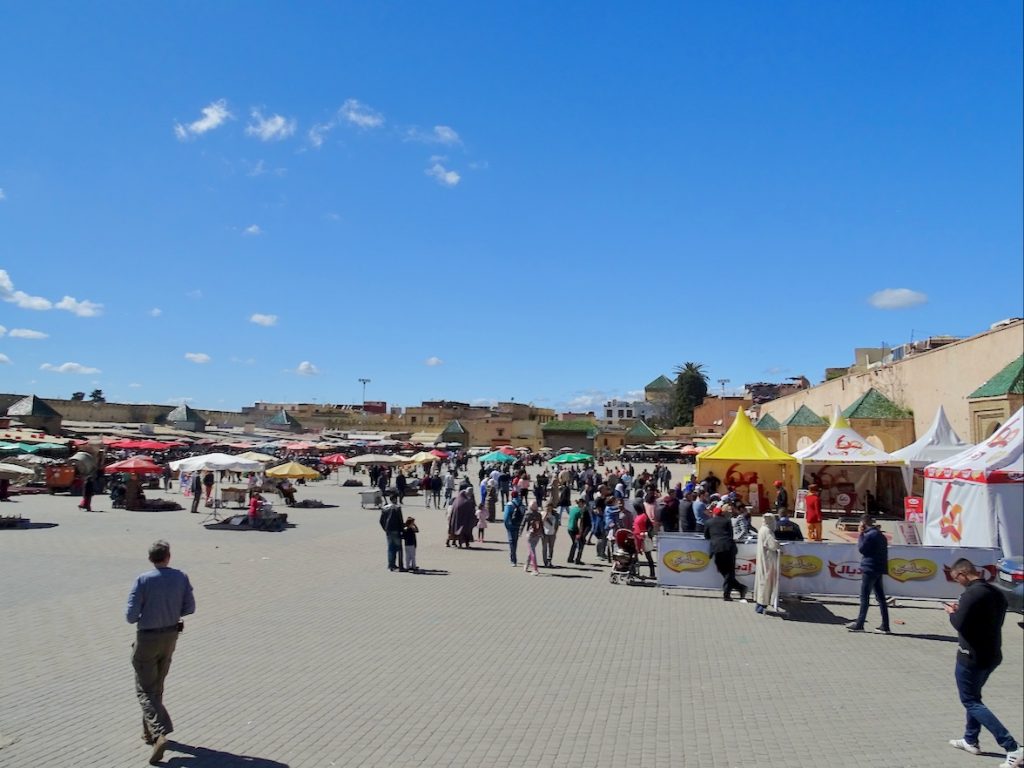
I have mixed feelings about this achievement. Happy, on the one hand, since it would bring well-deserved attention to a city with a truly fascinating past; concerned, on the other, since, potentially, it would create another congested tourist trap. Meknes would benefit from more interest of appreciative connoisseurs of Moroccan art and history, but a horde of ignorant selfie-obsessed passersby would make no good.
Back to our visit, Meknes caught my curiosity precisely because of its “under the radar” status. There are four imperial cities in Morocco (aka four historical capitals): Fez, Marrakesh, Rabat, and Meknes. Fez and Marrakesh are the country’s top destinations. Rabat is the current capital. And Meknes, well… is the least favorite uncle. To understand these dynamics, let’s dive into the fascinating history of this illustrious city.
A brief history of Meknes
Meknes is a city in northern Morocco founded in 711 by the Amazigh (aka Berber) tribe Meknassas, hence the origin of its name. It is one of the four imperial cities of Morocco and the third largest city of the kingdom according to the 2014 census. During the rule of Moulay Ismail Ibn Sharif (1672-1727), it was the capital of Morocco. The historic city of Meknes has been listed as UNESCO World Heritage Site since 1996.
The reign of Moulay Ismail is considered to be a golden period in the history of Morocco. He is regarded as one of the most significant figures of the country’s past. The second sultan of the Alaouite dynasty (the current Moroccan royal family), Moulay Ismail claimed to be a descendant of Muhammad, the founder of Islam. He inherited a country weakened by internal tribal wars and royal successions, nevertheless, by the end his rule, he controlled the country with a powerful army of more than 150,000 soldiers, most of them slaves from sub-Saharan Africa. Moulay Ismail guaranteed the continued existence of his elite forces by providing troops with women and raising their offspring as warriors.
He greatly expanded the Moroccan territory and established important diplomatic relations with France, England, and Spain. Yet, he was given a nickname “the Bloodthirsty” for his legendary cruelty and ruthlessness. It is estimated that he killed 30,000 people during the time he was in power.
Fun Fact
According to the Guinness World Records, Moulay Ismail fathered a total of 867 children, including 525 sons and 342 daughters by 1703, with his 700th son being born in 1721. This is considered the record number of offspring for any man throughout history that can be verified.
Aboulqasem Ben Ahmed Al-Ezziani, a historian and a chronicler of Moulay Ismail reign, wrote that “the sultan loved Meknes, the climate of which had enchanted him, and he would have liked never to leave it.”
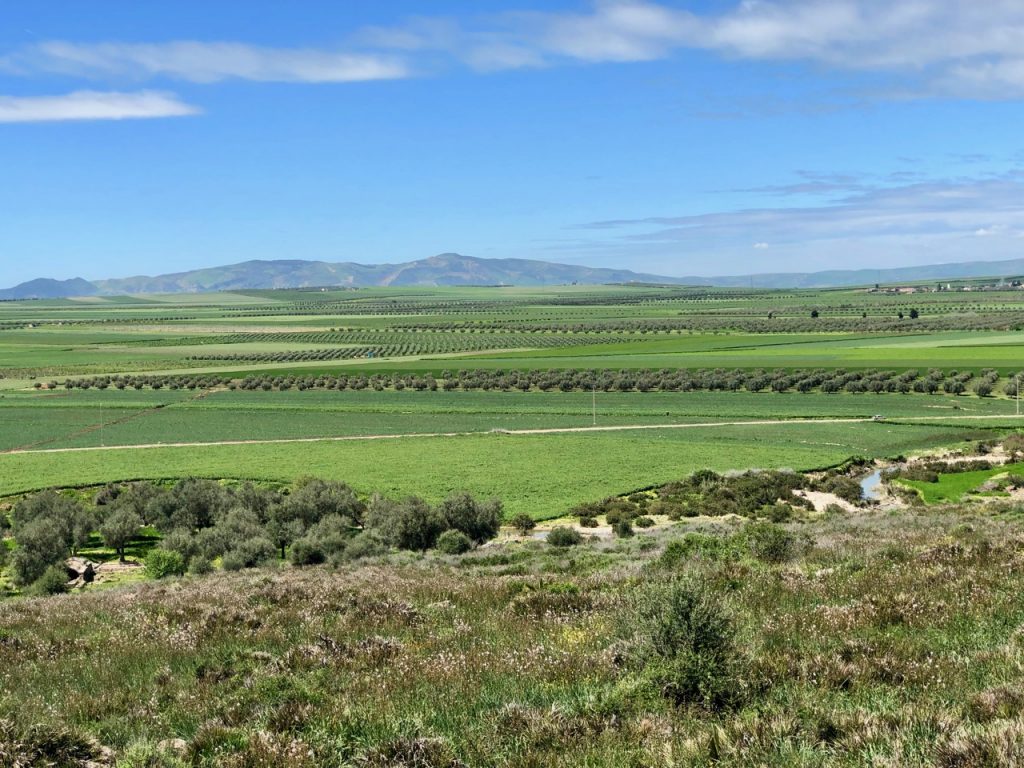
Through all his troubled rule with its savagely brutal warfare and far-reaching negotiations, palace intrigues, violent bloodshed, and drastic administrative reforms, his heart continuously led him back to the wooded slopes on which he dreamed of building a city more splendid than Fez or Marrakech.
A contemporary and admirer of Louis XIV, Moulay Ismail was obsessed with personal building legacy. Immediately after assuming power in 1672, he moved the capital to Meknes in order differentiate himself from his predecessors, and to consolidate political and military power at a distance from the cities that had once supported his opponents. It took a little over a decade to transform Meknes into the “Moroccan equivalent of Versailles.” During his extraordinary 55-years-long reign – longer than any other ruler in Moroccan history – he stubbornly built and expanded the city as a monument to himself.
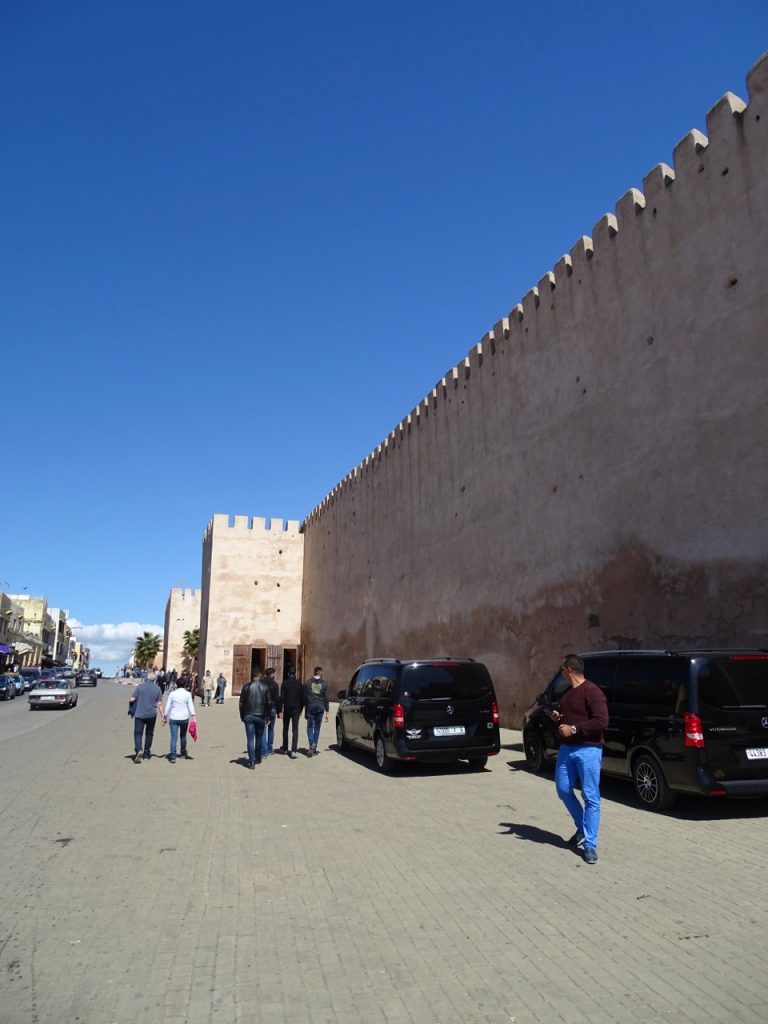
Moulay Ismail invested much of his significant personal wealth in the construction of Meknes. Sadly, he also plundered materials from the architectural masterpieces of the former capital cities. The palaces of Moulay Ismail were known for their opulence. At the time, the only other royal residence that rivaled Meknes in terms of richness and scale was Louis XIV’s Versailles, which was built during the same period.
His successors continued with his building program for a while, but in 1755 the colossal palace compound was severely damaged by an earthquake. By 1757 his grandson, Mohammad III moved the capital to Marrakesh. Just one palace has been continuously maintained for use by the royal family when they are in the city. However, Meknes has not been the principal Moroccan capital city since Moulay Ismail’s rule.
Thus, the splendid and a bit crazy story of the great Meknes ends. Since then, it became more of a legend, a splash of history that never regained its former glory.
Big mistake
It was impressively long city wall. Riding along it made dry numbers – about 40 km of city walls with 20 gates – much more relatable. Finally, our tireless driver-cum-guide stopped the car and, with a flourish, announced “Bab Mansour.” Eh? Well…
In hindsight, it was easy to see our mistake. Meknes was the third entry on our agenda for that day. Earlier in the morning we toured Volubilis and spent midday in Moulay Idriss. By the time we got to Meknes, I was already overwhelmed with impressions and emotions from two remarkable places. Even if the lost city of Atlantis suddenly appeared out of thin air, I wouldn’t be surprised.
Travel Tip
Plan to spend a day in Meknes. I would recommend walking around to fully appreciate the size of the city. Spend another day in nearby Moulay Idriss. Unlike in Meknes, walking up and down the narrow streets would help to understand why donkeys are the best mode of transportation there.
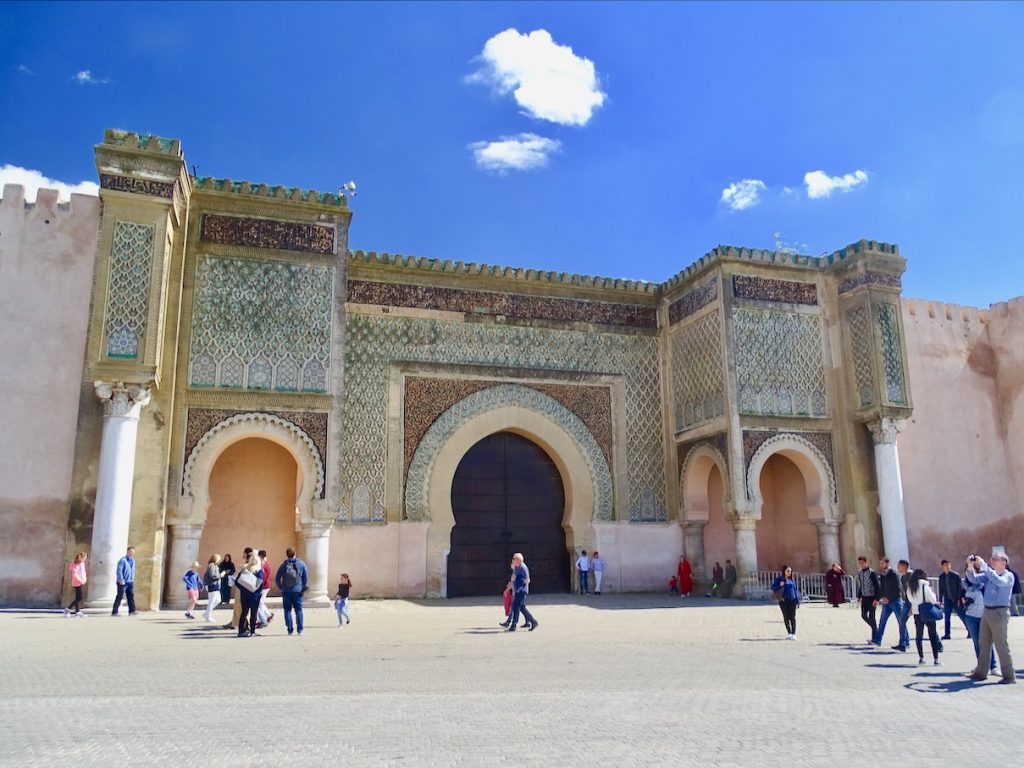
Bab Mansour was meant to dazzle. This famous gate was built as the grand entrance to the imperial city. The intriguing fact about Bab Mansour though is that today it leads nowhere. Unlike all other city gates, this one is serving the sole purpose of impressing visitors and is now the entrance to the art exhibitions space. It was completed in 1732 by Moulay Abdallah, son of Sultan Moulay Ismail.
A testament to the wealth and power of Morocco at the time, the Bab Mansour features stunning zeillij tiling, intricate decorations, and inscriptions. The height of the door is about 16m, and the marble columns were brought from the Roman ruins of Volubilis. Currently, it is one of the most well-preserved historical landmarks of the city.
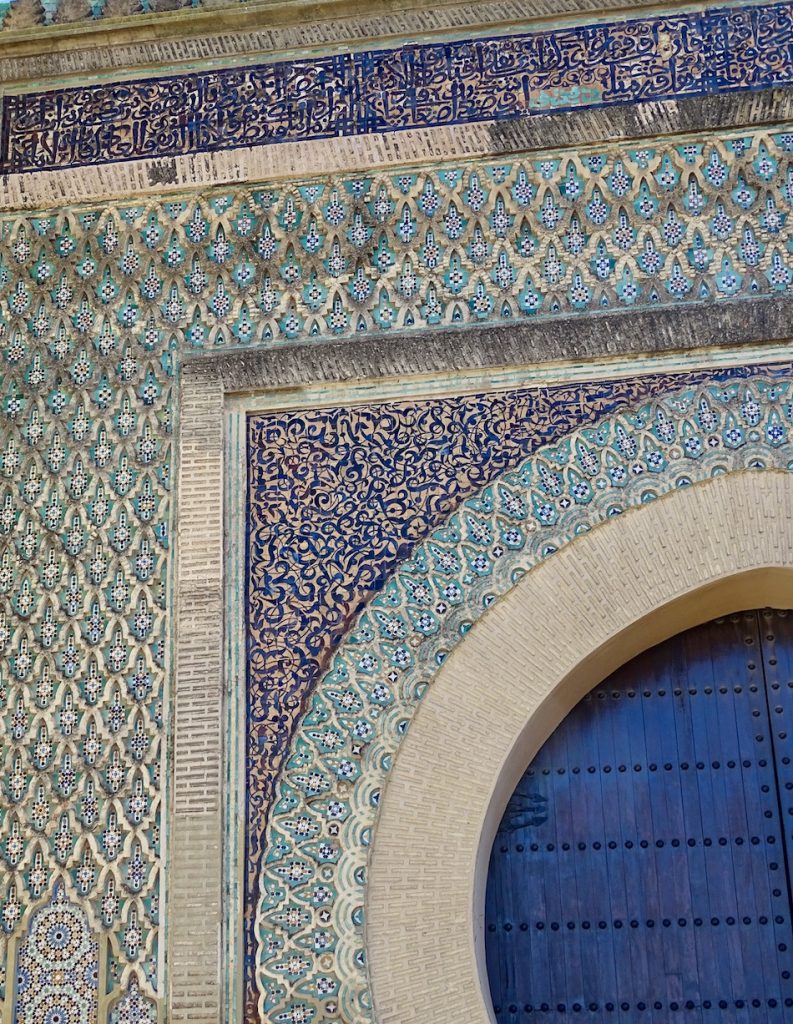
To be fair, Bab Mansour could put a bit more efforts to impress. No doubts, the design and architectural details of the gate are impressive. However, it would greatly benefit from some cleaning. The elements did their share of damage over the centuries and added somewhat unkept touch to Bob Mansour’s appearance.
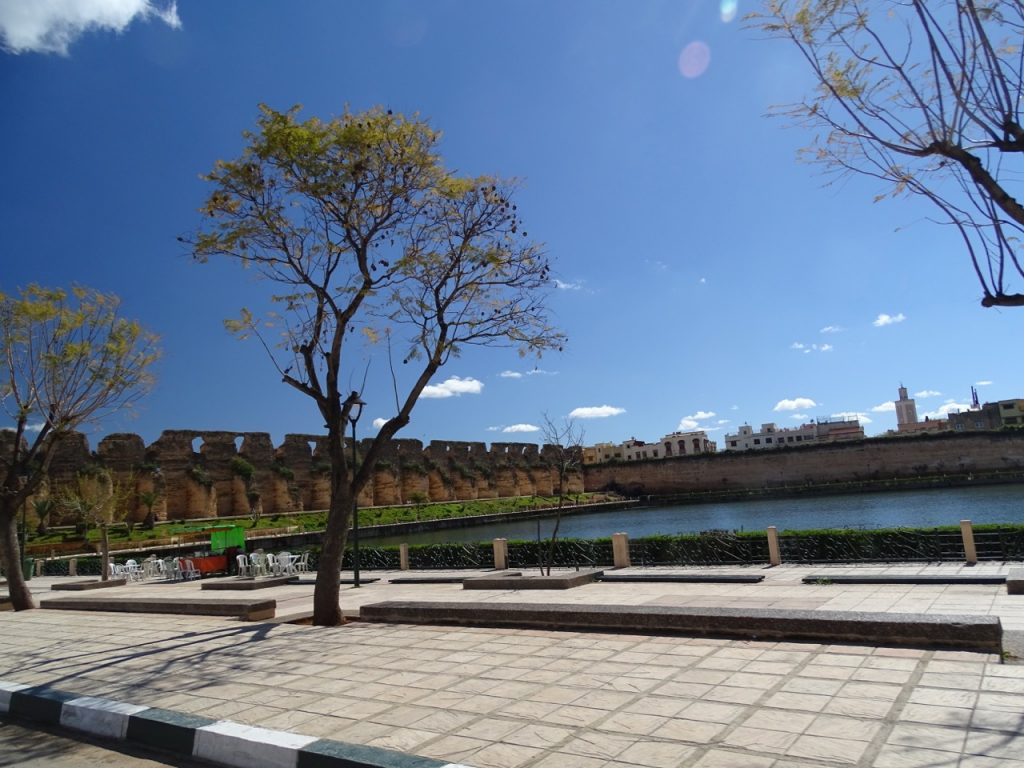
Agdal Basin is an enormous artificial stone-lined lake. Its purpose was to supply water to the palace and the city. Apparently, the women of the harem were sailing there too. Back in the day, the lake was fed by a complex aqueduct system about 25 km long. Nowadays, the water is stagnant. Nevertheless, it is still a popular place among locals to spend a few hours during a weekend or after dark during the week.
Ode to the Stables
If I was asked for one reason why Meknes is worth a visit, Heri es-Souani (aka Royal Stables and Granaries) would be the answer. It was the last entry on our Meknes itinerary and, honestly, it impressed me the most.
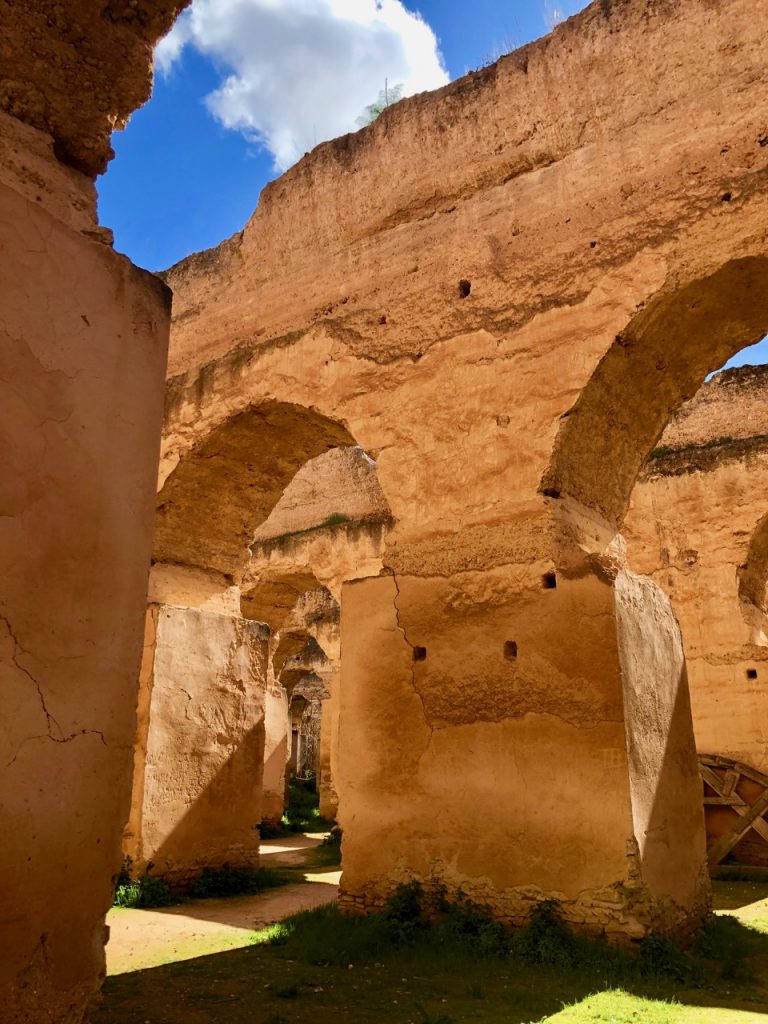
The chronicler described Heri es-Souani as “… a granary with immense subterranean reservoirs of water, and a stable three miles long for the Sultan’s horses and mules; twelve thousand horses could be stabled in it. The flooring rested on vaults in which the grain for the horses was stored…” He wrote it in the 19th century.
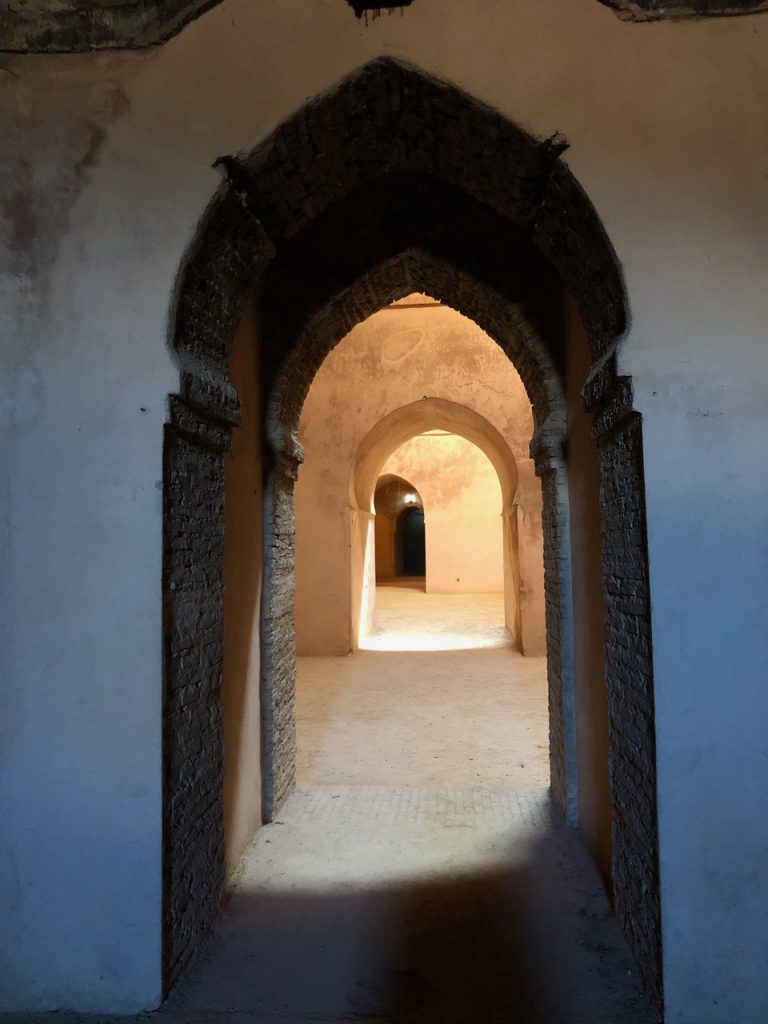
By the end of the day, the place was quiet and almost empty. According to historical records, thick walls and a cedar forest planted on the roof meant to keep the structure cool. Sadly, the 1755 earthquake the same one that devastated Lisbon destroyed the roof.
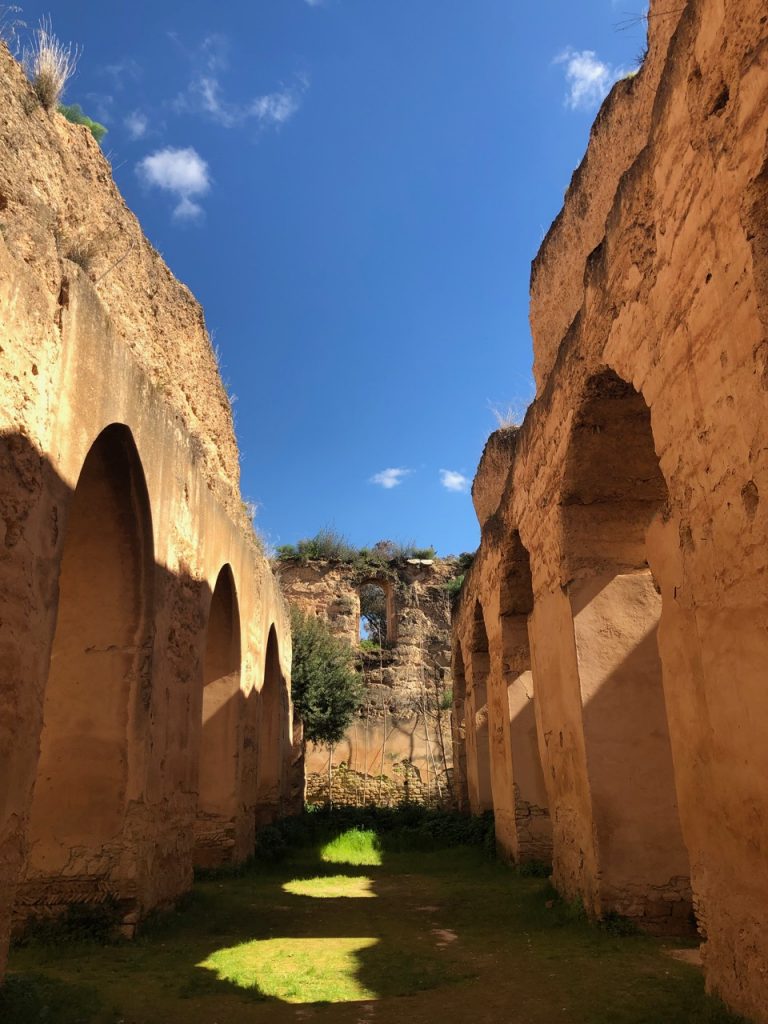
The light wind was gently moving a few leaves that were poking through cracks in the walls. It was such a peaceful scene that I couldn’t imagine what a mayhem it should be with all the horses and their attendants around.
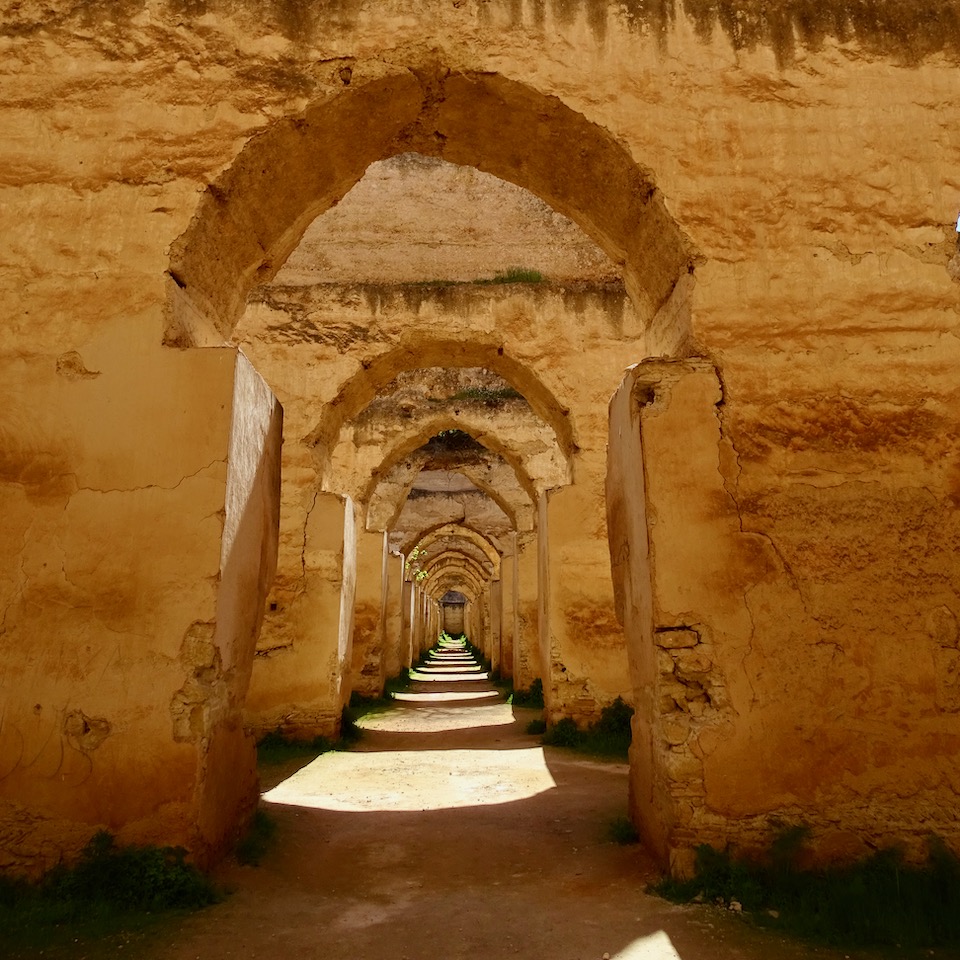
The site had been an engineering and architectural marvel in its day. Presently, Heri es-Souani is a dream come true for any aspiring photographer. The rich, warm colors of the walls… The depth of the endless stone arches combined with deep blue skies and occasionally fluffy clouds…
Bidding farewell to Meknes, this last look at the city wall essentially summarized my impression of the city. Formidable walls were meant to safeguard the extravagant new capital. However, it was such a short-lived attempt – just a lifetime of one ruler – before a combination of practical approach of his descendants and a natural disaster led to the demise of Moroccan Versailles.
Share this article on Pinterest by clicking Save button
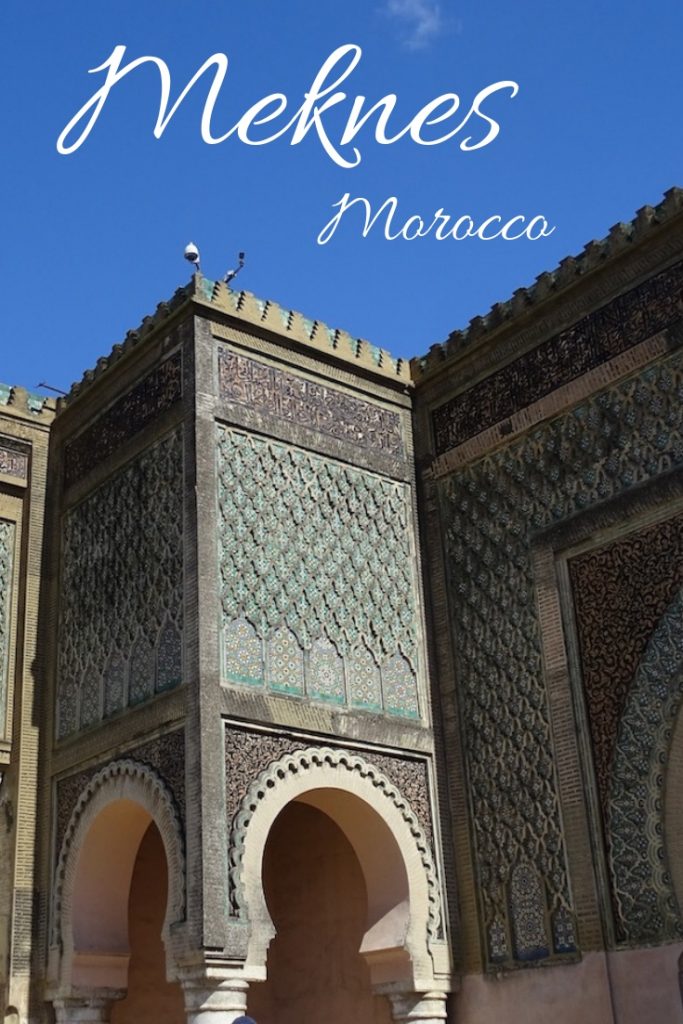
I’ve always fancied going to Morocco but still not yet been.
But after reading this fascinating piece I think it’s time to move it up the ‘to do’ list!
Great to see you here, Rob. Thank you for stopping by. If you get a chance – yes, Morocco worth a visit. There are some remarkable places there that managed to keep its authentic personality.
That’s encouraging to hear.
It becomes harder as each year passes for places to retain a unique identity.
It’s a constant challenge, travelling a great deal, but doing so by treading lightly, with as little negative impact and as much positive local impact as possible.
What a post Elena! These pictures say it all; staggeringly beautiful. Meknes seems like it is on the must visit list.
Thank you, Ryan. I am glad you liked the pictures. Meknes certainly deserves some extra appreciation. Cheers!